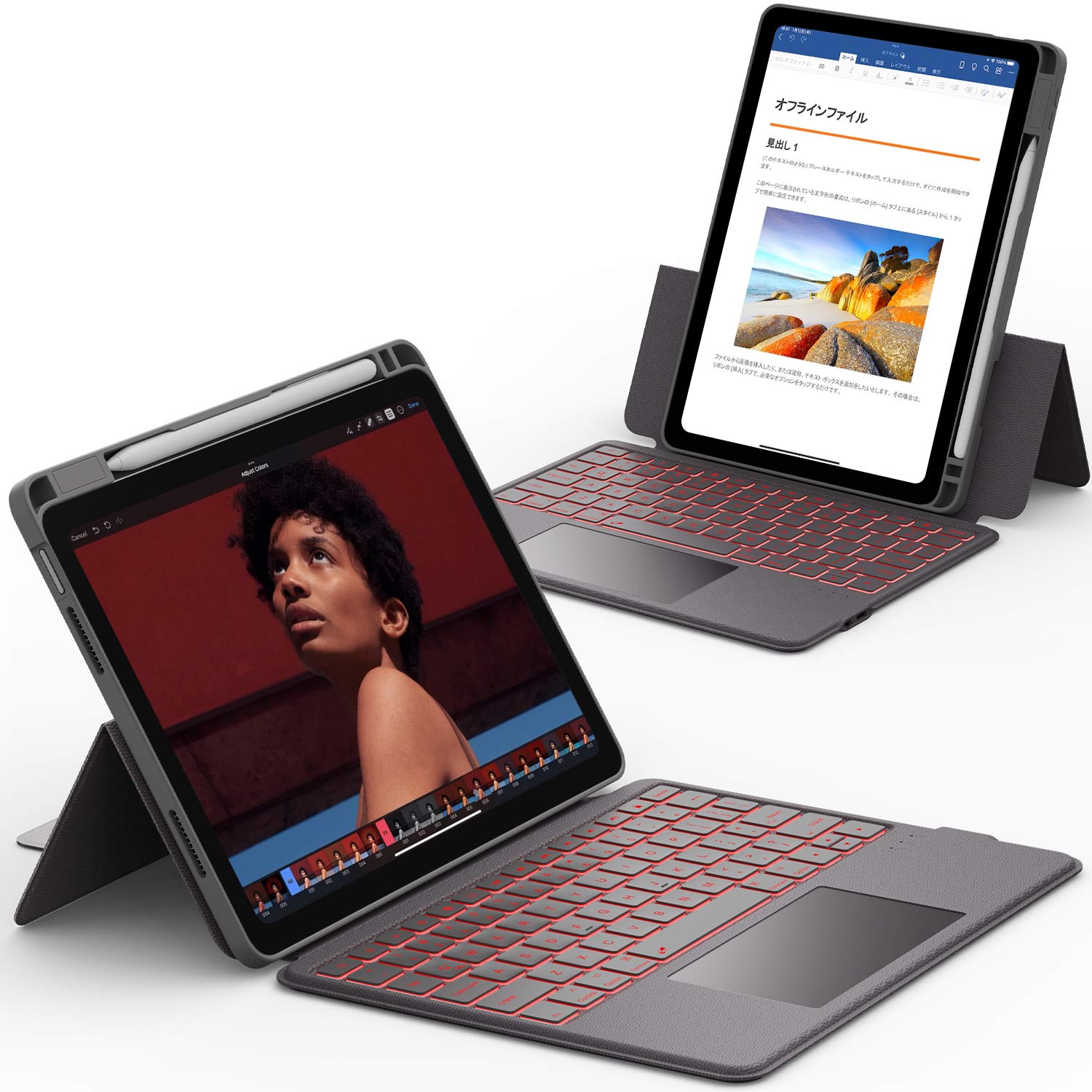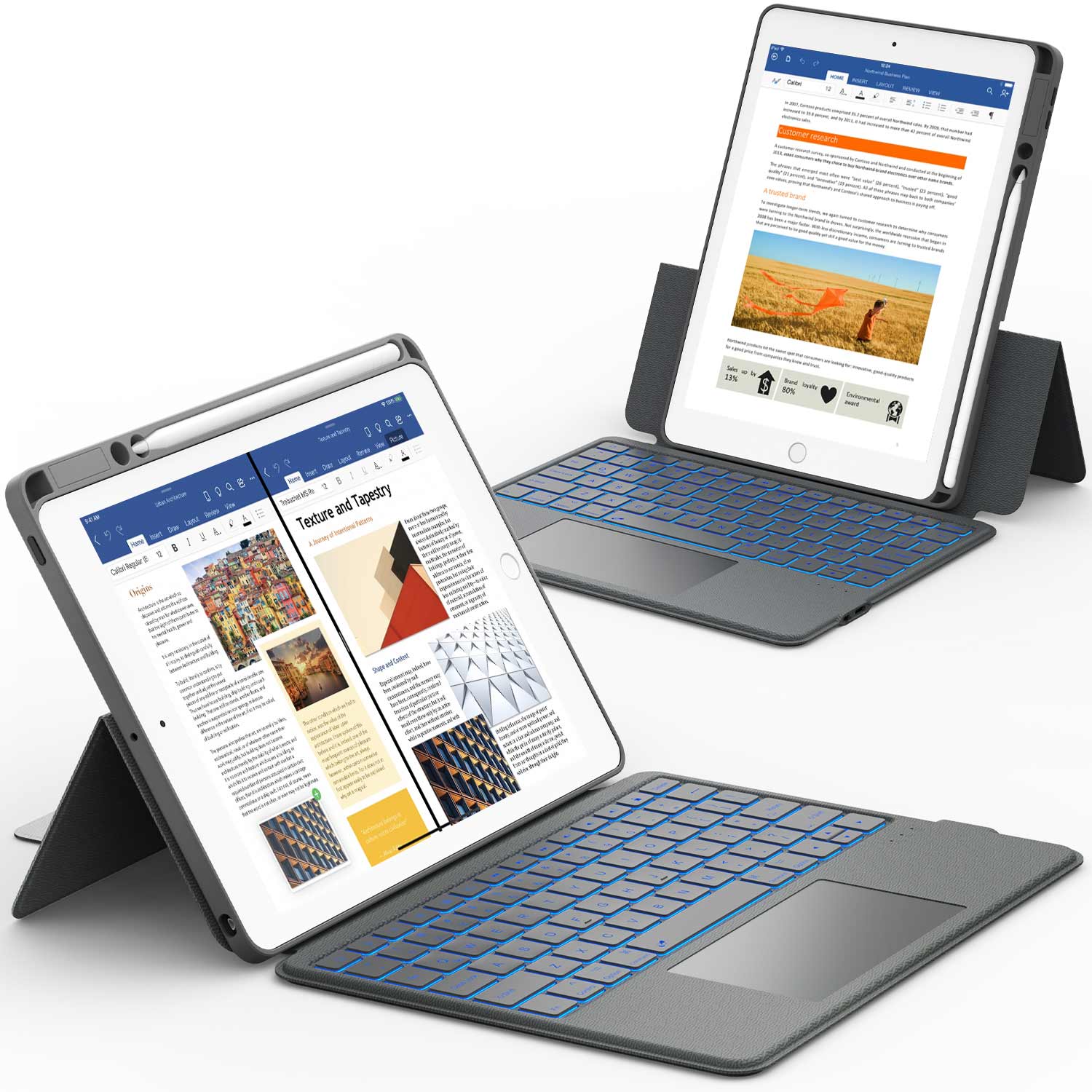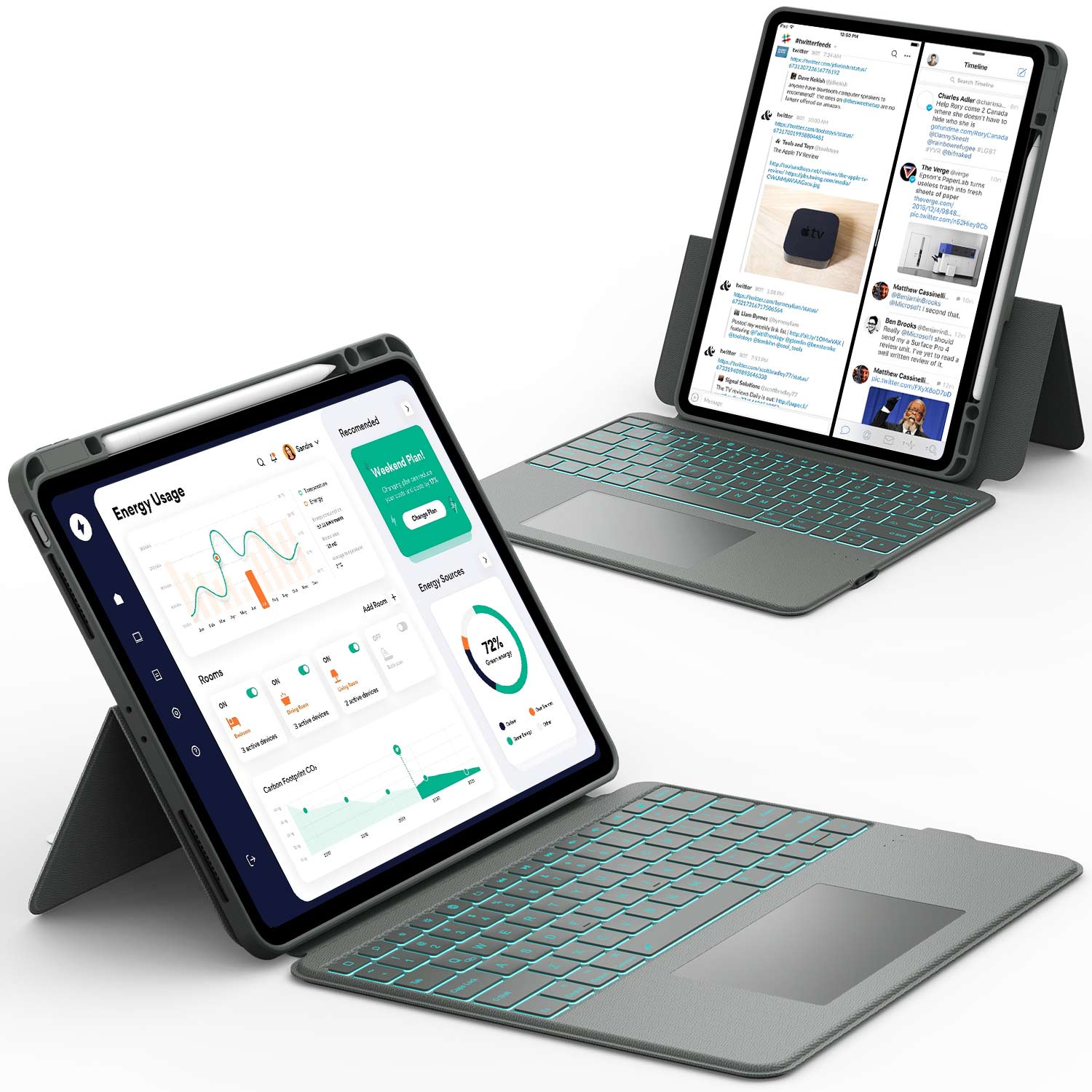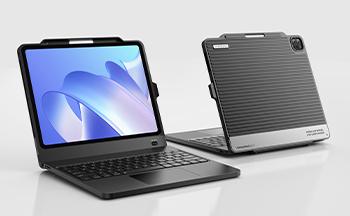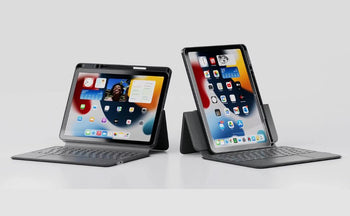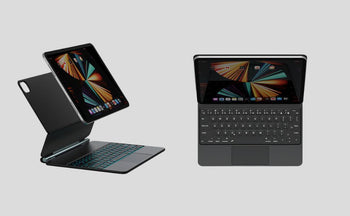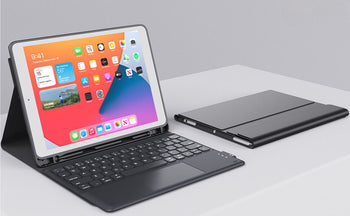Ever wondered how to get your iPad screen onto your big TV? It's actually pretty simple, whether you want to watch movies, show off photos, or even play games on a larger display. This guide will walk you through all the ways to screen mirror your iPad to a TV, making it easy to share content with everyone.
Key Takeaways
- AirPlay is your go-to for wireless mirroring if you have a compatible TV or Apple TV.
- For non-AirPlay TVs like Roku or Chromecast, you'll need a third-party app from the App Store.
- A direct HDMI cable connection is a reliable option if you don't mind wires.
- Always make sure your iPad and TV are on the same Wi-Fi network for wireless mirroring to work.
- You can name your AirPlay devices to make finding them easier, especially if you have a few around the house.
Mirroring Your iPad to a TV Using AirPlay

AirPlay offers a straightforward way to display your iPad's screen on your TV. It's wireless, convenient, and built right into Apple devices. Let's explore how to make the most of it.
Understanding AirPlay Compatibility
Before you start, it's important to know if your TV supports AirPlay. Many newer smart TVs from brands like Samsung, LG, Sony, and Vizio have AirPlay 2 built-in. If your TV doesn't have native AirPlay support, you can use an Apple TV. AirPlay compatibility is key for a smooth mirroring experience.
Connecting Via Control Center
Connecting your iPad to your TV via AirPlay is super easy. Here's how:
- Make sure your iPad and TV are on the same Wi-Fi network.
- Open Control Center on your iPad. (Swipe down from the top-right corner on newer iPads, or swipe up from the bottom on older models.)
- Tap the "Screen Mirroring" button. A list of available AirPlay devices will appear.
- Select your TV from the list. If an AirPlay passcode appears on your TV screen, enter it on your iPad.
Once connected, your iPad's screen will be mirrored on your TV. You can now enjoy your favorite content on a bigger screen.
Automatic AirPlay Streaming Settings
Did you know you can set your iPad to automatically connect to TVs you use frequently? This can save you time and hassle. To adjust these settings:
- Go to Settings > General > AirPlay & Handoff > AirPlay & Continuity.
- Choose your preferred setting: Automatic, Never, or Ask. "Automatic" lets your iPad automatically connect to known devices. "Never" prevents automatic connections. "Ask" prompts you to confirm each connection. This is useful for iPhone screen mirroring.
Using Third-Party Apps for Screen Mirroring
Sometimes, AirPlay isn't an option, or maybe you want to mirror to a device that doesn't support it. That's where third-party apps come in. They can be a solid alternative, but it's good to know what you're getting into.
Mirroring to Roku, Chromecast, and Fire TV
If you don't have an Apple TV, don't worry! You can still mirror your iPad to your TV using devices like Roku, Chromecast, and Fire TV. You'll need to download a mirroring app on your iPad. These apps use the iPad's screen recording feature to send the video to your streaming device. For Fire TV, you might also need to download a separate app on the Fire TV itself, but the iPad app will usually guide you through that. I've had good experiences with Chromecast Mirroring & Remote apps.
Recommended Mirroring Applications
There are a bunch of mirroring apps out there, and some are better than others. Apps like Docast, Replica, AirBeam, or TV Mirror are often recommended. They generally work well with iPads and offer good picture quality. The best app for you will depend on your specific needs and the devices you're using.
Potential Downsides of Third-Party Apps
While third-party apps can be useful, there are a few things to keep in mind:
- Ads: Many free apps include ads, which can be annoying. You might have to watch an ad before you can start mirroring.
- Latency: There can be a slight delay between what you see on your iPad and what's displayed on the TV. This isn't usually a big deal for casual use, but it can be noticeable if you're playing games.
- Video Quality: The video quality might not be as good as with AirPlay or a wired connection. It's usually fine for photos, websites, and social media, but it might not be ideal for watching movies.
It's worth trying out a few different apps to see which one works best for you. Consider upgrading to a paid version to remove ads and potentially improve performance. Just be sure to read reviews and check the app's compatibility with your devices before you download it.
Wired Connection Options for iPad to TV
Sometimes, you just want a solid, reliable connection. That's where wired connections come in. While wireless is convenient, a cable can offer a more stable and secure way to mirror your iPad to your TV. Plus, it doesn't rely on Wi-Fi, which can be a lifesaver in crowded areas or when your network is acting up.
Connecting with an HDMI Cable
The most common way to connect your iPad to a TV using a wire is with an HDMI cable. HDMI (High-Definition Multimedia Interface) delivers both video and audio signals through a single cable, making it a simple and effective solution. It's a digital connection, so you'll get a clear, crisp picture on your TV. Just plug one end into your TV's HDMI port and the other into the appropriate adapter connected to your iPad. Remember to switch your TV to the correct HDMI input to see your iPad's screen.
Required Adapters for HDMI Connection
Since iPads don't have a standard HDMI port, you'll need an adapter. The type of adapter you need depends on the type of port your iPad has. Older iPads use the Lightning port, while newer models use USB-C. Apple sells its own Lightning Digital AV adapter and USB-C Digital AV Multiport Adapter. There are also third-party options available, but be careful. Some cheaper adapters might not support HDCP (High-bandwidth Digital Content Protection), which is needed to play protected content from services like Netflix or Hulu. Make sure the adapter you choose supports HDCP if you plan on streaming video. If you have an older TV, you might even need a VGA adapter, though HDMI is generally preferred for better picture quality.
Benefits of a Wired Connection
There are several advantages to using a wired connection:
- Reliability: A wired connection is generally more stable than a wireless one, especially in areas with a lot of Wi-Fi interference.
- Security: Wired connections are inherently more secure than wireless connections, as there's no risk of someone intercepting the signal.
- Simplicity: Once you have the right adapter and cable, connecting your iPad to your TV is as simple as plugging them in. No need to mess with settings or apps.
A wired connection can be a great option if you're experiencing issues with AirPlay or other wireless mirroring methods. It's also a good choice if you want the most reliable and secure connection possible. Plus, it can save battery life on your iPad since it's not constantly transmitting data wirelessly.
Chesona ArmorDock Keyboard Case for iPad Pro
Features:
- High-Definition 4K HDMI Output
- Backlit keyboard for easy typing in low - light environments
- Precision cutouts for easy access to all ports and buttons
- Adjustable viewing angles for comfortable media consumption
- SSD interface, Fits 2230, 2242, 2260, and 2280 SSDs (max 2TB)
Optimizing Your Screen Mirroring Experience

So, you've got your iPad connected to your TV – awesome! But is the picture a little fuzzy? Is there a weird delay? Let's iron out those wrinkles and make sure you're getting the best possible experience.
Ensuring Devices are on the Same Wi-Fi Network
This might seem obvious, but it's the number one culprit for mirroring issues. Make sure both your iPad and your TV (or AirPlay device) are connected to the same Wi-Fi network. I can't tell you how many times I've spent troubleshooting only to realize my iPad was still on the guest network. It's an easy mistake to make! A stable Wi-Fi connection is key for smooth screen mirroring.
Entering AirPlay Passcodes
For added security, AirPlay often prompts you for a passcode, especially the first time you connect to a device. This prevents random people from hijacking your TV. If you're constantly being asked for a passcode, you can usually disable this feature in your Apple TV or AirPlay receiver settings. Just be aware of the security implications before you do. Here's a quick rundown:
- First connection: Expect a passcode.
- Subsequent connections: Should connect automatically (unless settings changed).
- Troubleshooting: If prompted repeatedly, double-check AirPlay settings on your TV.
Troubleshooting Common Mirroring Issues
Okay, so things still aren't working perfectly? Don't panic! Here are a few common problems and how to fix them:
- Laggy video: Try closing other apps on your iPad to free up resources. Also, move closer to your Wi-Fi router.
- No audio: Make sure the volume is turned up on both your iPad and your TV. Check the audio output settings on your iPad to ensure it's set to the AirPlay device.
- Choppy connection: Restart both your iPad and your TV. Sometimes a simple reboot is all it takes.
If you're still having trouble, check for software updates on both your iPad and your TV. Outdated software can sometimes cause compatibility issues. Also, consider whether other devices on your network are hogging bandwidth. Streaming video on multiple devices simultaneously can definitely impact mirroring performance.
Understanding AirPlay Versus Screen Mirroring

Streaming Content Directly with AirPlay
AirPlay is super handy because it lets you stream content directly from your iPad to your TV. Think of it like this: instead of showing everything on your iPad screen, AirPlay just sends the video or music. This is great for watching movies or listening to music because you can still use your iPad for other stuff without interrupting the playback on your TV. It's also more battery-friendly than mirroring your entire screen. You can easily stream media from your iPad to your Apple TV.
Full Screen Mirroring Capabilities
Screen mirroring, on the other hand, shows exactly what's on your iPad screen on your TV. This is perfect for things like:
- Presenting a slideshow of photos.
- Browsing social media together.
- Playing games where you want everyone to see the action.
Mirroring is useful when you want to display everything on your iPad, not just specific content. It's like having a giant external display for your iPad.
Battery Consumption Differences
Battery life is something to consider. AirPlay, because it only streams the video or audio, uses less battery than screen mirroring. When you're mirroring, your iPad is constantly sending a video feed of the entire screen to the TV, which drains the battery faster.
If you're planning a long movie night, using AirPlay to stream directly from a video app will help your iPad last longer than mirroring the screen for the same amount of time. It's a simple way to extend your viewing pleasure without constantly reaching for a charger.
Labeling AirPlay Devices for Easy Identification
It's easy to get lost in a sea of "Apple TV" or "Living Room TV" when you're trying to quickly mirror your iPad. Thankfully, you can rename your AirPlay devices to make them easier to identify. This is especially helpful if you have multiple Apple TVs or AirPlay-enabled devices in your home. Let's explore how to organize and customize your AirPlay setup.
Organizing Multiple AirPlay Devices
Having several AirPlay devices can become confusing quickly. A good strategy is to group devices logically by room or function. For example, you might have "Living Room TV," "Bedroom Apple TV," and "Office Projector." This simple organization makes it much easier to select the correct device when you want to stream videos from your iPad.
Simplifying Device Selection
Clear and descriptive names drastically simplify the device selection process. Instead of guessing which "Apple TV" is the right one, you can immediately identify the device you need. Consider using names that are instantly recognizable to everyone in your household. This reduces frustration and makes screen mirroring a breeze.
Customizing Device Names
Customizing device names is straightforward. Here's how you can do it:
- For Apple TV: Go to Settings > General > About > Name.
- For AirPlay-enabled Smart TVs: The process varies by manufacturer, but it's usually found in the TV's settings menu under Network or AirPlay settings. Consult your TV's manual for specific instructions.
- For HomePod: Open the Home app, long-press the HomePod icon, tap the gear icon for settings, then tap Name.
By taking a few minutes to rename your AirPlay devices, you can significantly improve your screen mirroring experience. A little organization goes a long way in making your tech setup more user-friendly.
Once you've renamed your devices, the new names will appear in the AirPlay list on your iPad, making it much easier to choose the correct destination every time. This simple step can save you time and prevent accidental mirroring to the wrong screen.
Wrapping It Up
So, there you have it. Getting your iPad screen onto your TV isn't too hard, whether you're going wireless with AirPlay or using an app for other smart TVs. Even a good old HDMI cable works if you don't mind the wires. The main thing is picking the method that fits your setup best. With these options, you can easily share whatever's on your iPad with everyone in the room. It's pretty cool how simple it's become to get your content on the big screen.
Frequently Asked Questions
How do I mirror my iPad to my TV wirelessly?
If your TV has AirPlay, it's pretty easy! Just open the Control Center on your iPad, tap "Screen Mirroring," and pick your TV from the list. Make sure both your iPad and TV are connected to the same Wi-Fi network.
Can I mirror my iPad to a Roku, Chromecast, or Fire TV?
Yes, you can! For TVs like Roku, Chromecast, or Fire TV, you'll need to download a special mirroring app from the App Store. Apps like Docast, Replica, AirBeam, or TV Mirror are good choices. They work well and give you a clear picture.
Is it possible to connect my iPad to my TV with a cable?
Yes, you can use an HDMI cable to connect your iPad to your TV. You'll need a special adapter that plugs into your iPad and has an HDMI port. This gives you a super stable connection without needing Wi-Fi.
What if I can't get my iPad to mirror to my TV?
Sometimes, you might need to enter a four-digit code that pops up on your TV screen onto your iPad. Also, make sure both devices are on the same Wi-Fi network. If you still have trouble, try restarting both your iPad and your TV.
What's the difference between AirPlay and Screen Mirroring?
AirPlay lets you send videos or music from your iPad to your TV, often while you can still use your iPad for other things. Screen Mirroring, on the other hand, shows everything that's on your iPad's screen, exactly as it appears, on your TV. AirPlay usually uses less battery.
How can I make it easier to pick the right TV when I want to mirror?
You can give your AirPlay devices unique names, like "Living Room TV" or "Bedroom Apple TV." This makes it much easier to find and select the right device when you want to mirror or stream. You can usually change these names in your TV's settings or the Home app on your iPad.
